Fake or Fortune?
| Fake or Fortune? | |
|---|---|
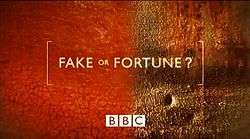 | |
| Genre | Documentary |
| Presented by | |
| Country of origin | United Kingdom |
| Original language(s) | English |
| No. of series | 5 |
| No. of episodes | 19 |
| Production | |
| Producer(s) | Simon Shaw |
| Running time | 60 minutes |
| Release | |
| Original network | BBC One |
| Original release | 19 June 2011 – present |
Fake or Fortune? is a 2011 BBC television series which examines the provenance or attribution of notable artworks. It is presented by journalist Fiona Bruce and art dealer and art historian Philip Mould, with specialist research carried out by Dr. Bendor Grosvenor.[1] Each series has first aired on BBC One, except the third series accidentally first airing on SVT.[2] The fifth series started broadcasting in July 2016.
Synopsis
In each episode, Fiona Bruce and Philip Mould focus their attention on a picture (or a group of pictures), usually related to one particular artist. Assisted by Dr. Bendor Grosvenor, the team investigate the paintings on two fronts: establishing the provenance of the piece by working backwards from present day to the time of the work's creation; and on a forensic level, with investigation and scientific tests on the materials used to help establish specific time frames and the unique painting styles and quirks of the artist. This evidence is then presented to established authorities to help to argue the legitimacy of the work and its possible addition to the relevant catalogue raisonné.
Series overview
| Series | Episodes | Originally aired | |||
|---|---|---|---|---|---|
| First aired | Last aired | ||||
| 1 | 4 | 19 June 2011 | 10 July 2011 | ||
| 2 | 3 | 16 September 2012 | 30 September 2012 | ||
| 3 | 4 | 19 January 2014 | 9 February 2014 | ||
| 4 | 4 | 5 July 2015 | 26 July 2015 | ||
| 5 | 4 | 17 July 2016 | 28 August 2016 | ||
Episodes
Series 1 (2011)
There were four episodes in the first series, which started on 19 June 2011:
| No. overall | No. in series | Title | Produced and directed by | Original air date |
|---|---|---|---|---|
| 1 | 1 | "Monet" | Nicky Illis | 19 June 2011 |
| The authenticity of the Monet painting Bords de la Seine à Argenteuil.[3][4] The Wildenstein Institute, presented with considerable evidence of the painting's authenticity, controversially rejected it as a Monet, and was criticised by Philip Mould.[5] (The owner subsequently sued the Institute, but lost.[6]) | ||||
| 2 | 2 | "Homer" | Nicola Lafferty | 26 June 2011 |
| The ownership of the painting Children Under a Palm by Winslow Homer.[7] | ||||
| 3 | 3 | "Van Meegeren" | Nicky Illis | 3 July 2011 |
| The authenticity of the painting The Procuress owned by the Courtauld Institute was determined to be a forgery committed by Han van Meegeren.[8] | ||||
| 4 | 4 | "Rembrandt" | Ben Southwell | 10 July 2011 |
| Man in an Oriental Costume was once attributed to Rembrandt as a portrait of the artist's father, which was on sale in a gallery in Cape Town, South Africa. The painting was identified as a work looted by the Nazis and was reattributed to Isaac de Jouderville.[9] | ||||
- Works featured in series 1
 Bords de la Seine à Argenteuil
Bords de la Seine à Argenteuil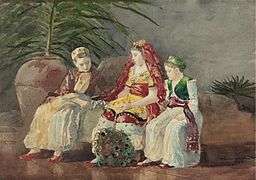 Children Under a Palm Tree
Children Under a Palm Tree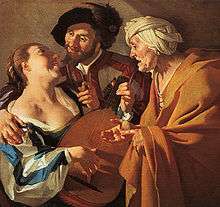 The Procuress
The Procuress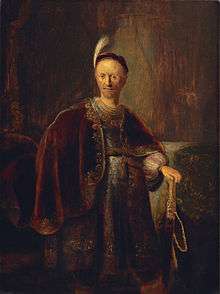 Man in an Oriental Costume
Man in an Oriental Costume
Series 2 (2012)
The first episode of the new series was shown in the UK on 16 September 2012. The series had three episodes:
| No. overall | No. in series | Title | Produced and directed by | Original air date |
|---|---|---|---|---|
| 5 | 1 | "Degas and the Little Dancer" | Robert Murphy | 16 September 2012 |
| Danseuse Bleue et Contrebasses, with an apparent signature by Edgar Degas. It had been bought as a Degas in 1948 with an outline provenance going back to the artist's studio. Scientific analysis of the paint confirmed that it was consistent with the 1890s. Research confirmed the provenance and the painting was accepted as an authentic Degas and added to the catalogue raisonne.[10] | ||||
| 6 | 2 | "Turner: A Miscarriage of Justice?" | Nicky Illis[11] | 23 September 2012 |
| Three paintings attributed to J. M. W. Turner, The Beacon Light, Off Margate and Margate Jetty in the collection of the National Museum of Wales.[12] These had been donated by two sisters: Gwendoline and Margaret Davies. In the 1950s, they had been judged to be fake, but as a result of the programme's research, are now accepted as genuine. | ||||
| 7 | 3 | "Van Dyck: What Lies Beneath" | Rachel Jardine | 30 September 2012 |
| A portrait of Queen Henrietta Maria, as St Catherine attributed to Anthony van Dyck, belonging to Mould.[13][14] This was shown to be an incomplete portrait of Queen Henrietta Maria (wife of Charles I) which had later been enlarged and painted over. | ||||
- Works featured in series 2
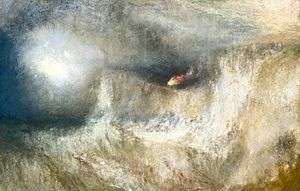 Turner – The Beacon Light
Turner – The Beacon Light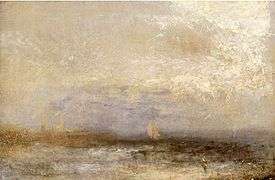 Turner – Off Margate
Turner – Off Margate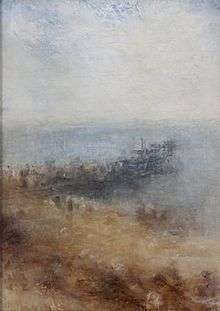 Turner – Margate Jetty
Turner – Margate Jetty.jpg) Van Dyck – Portrait of Queen Henrietta Maria, as St Catherine before restoration
Van Dyck – Portrait of Queen Henrietta Maria, as St Catherine before restoration
Series 3 (2014)
The third series features four episodes.
The first episode was first shown on 27 December 2013, on Sweden's SVT, with episodes 2 and 3 shown in the following weeks.[15] Philip Mould described the appearance on Swedish television weeks ahead of the British premiere as a "weird BBC World cock-up".[16] SVT on its website described the programme at the time as a "Brittisk dokumentärserie från 2012" (British documentary from 2012).[17]
| No. overall | No. in series | Title | Produced and directed by | Original air date |
|---|---|---|---|---|
| 8 | 1 | "Édouard Vuillard" | Nicky Illis [18] | 19 January 2014 |
| One of a group of paintings reputedly by French post-impressionist Édouard Vuillard, purchased speculatively by a writer, Keith Tutt. The investigation unearths documentation proving the painting is genuine, worth approximately £250,000.[19] The Wildenstein Institute panel unanimously accepted Tutt's painting as Vuillard's work.[20] The programme also shows that the painting is part of a pair, the other having been sold by the previous owner on eBay.[19] | ||||
| 9 | 2 | "John Constable" | Robert Murphy [21] | 26 January 2014 |
| Two different paintings attributed to John Constable,[22] one of Yarmouth Jetty and the other called A Sea Beach Brighton. The former turns out to be "most likely" by Constable, but heavily overpainted by another hand; the latter, formerly in Boston Museum of Fine Arts until sold in the 1990s, is deemed a genuine Constable.[23][24] | ||||
| 10 | 3 | "Marc Chagall" | Robert Murphy [25] | 2 February 2014 |
| Nude, 1909-10 was bought by a Leeds property developer in the belief that it was a genuine but unauthenticated work by Marc Chagall. Forensic tests showed that it was painted with pigments not available at the time it was purported to have been painted. It was submitted to the "Chagall Committee" who ruled that it was a fake and ordered its destruction.[26] | ||||
| 11 | 4 | "Thomas Gainsborough" | Ben Southwell[27] | 9 February 2014 |
| The team investigate two paintings from the Your Paintings web site: Imaginary Landscape and Portrait of Joseph Gape attempting to show they were by Thomas Gainsborough. They successfully convince Hugh Belsey, the world's leading Gainsborough expert, after he deemed Imagined Landscape as a Gainsborough drawing that was reworked in the 19th century, while the portrait was considered a lost Gainsborough painting.[27] | ||||
- Works featured in series 3
 The Café (1918) by Édouard Vuillard
The Café (1918) by Édouard Vuillard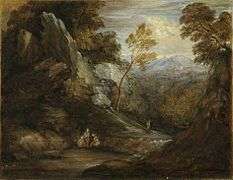 Imaginary Landscape by Thomas Gainsborough
Imaginary Landscape by Thomas Gainsborough Portrait of Joseph Gape by Thomas Gainsborough
Portrait of Joseph Gape by Thomas Gainsborough
Series 4 (2015)
| No. overall | No. in series | Title | Produced and directed by | Original air date |
|---|---|---|---|---|
| 12 | 1 | "L S Lowry" | Rachel Jardine[28] | 5 July 2015 |
| Experts determined whether three works - Lady with Dogs, Darby and Joan and Crowd Scene - were genuine paintings by L. S. Lowry or forgeries. They had been bought in the 1960s by a Cheshire businessman, Gerald Ames. Lowry was described as "probably the most faked British artist, his deceptively simple style of painting making him a soft target for forgers." Experts analysed the paint used in one of the paintings but the white paint did not match the flake white Lowry claimed to have always used. Lowry claimed to have only used five colours, flake white (lead white), ivory black, vermillion red, Prussian blue and yellow ochre, produced by Winsor & Newton. Photographic evidence from the 1950s, however, showed that he had experimented with both titanium white and zinc white: Darby and Joan contained traces of zinc white. The same painting was also plainly visible in a contemporary BBC documentary film.[29] | ||||
| 13 | 2 | "Renoir" | Nicky Illis[30] | 12 July 2015 |
| Two catalogues raisonnés of the works of Renoir disagreed about the authenticity of an unsigned work displayed at Picton Castle. The team unsuccessfully attempt to change the opinion of the Wildenstein Institute. | ||||
| 14 | 3 | "A Mystery Old Master" | Francis Welch[31] | 19 July 2015 |
| The team investigate a painting that hangs in St John the Baptist's Church, Tunstall in Lancashire. The 16th-century painting is discovered to be by Francesco Montemezzano and was probably donated, in the early 19th century, by vicar Frederick Needham, who was a half-brother of the church patron Richard Toulmin North.[32] | ||||
| 15 | 4 | "Munnings and Churchill" | Simon Mansfield[33] | 26 July 2015 |
|
Charles Henty seeks to validate the provenance of two inherited paintings, one by Alfred Munnings and one, putatively by Winston Churchill, discovered in a coal hole of a house in Ebury Street. Having suffered the death of his uncle, Charles wishes to sell the paintings to fund the continuation of a working farm in France. Philip visits David Coombs, a leading expert on the art of Churchill, who is unconvinced by the painting on account of the unfamiliarly well painted figures. He is particularly concerned by the colouring which, he feels, is tonally dissimilar to Churchill's accepted oeuvre. Having travelled to France the team discover, thanks to Luc Tombeur, that the painting is not of Èze, as originally thought, but of the Fountain of Saint-Paul in Saint-Paul-de-Vence. They are introduced to Joy Lutenbacher who recalls that her aunt, Joan Smith, witnessed Churchill paint the fountain. Bendor also finds evidence in a 1949 newsreel that Churchill painted the scene. Finally Joy provides a signed photo of Churchill that had been given to Joan Smith, dated October 1945. Despite this evidence, Coombs' initial 'serious misgivings' have not disappeared, and he decides to include the painting in his catalogue raisonné, although only in the 'Mysteries' section. Munnings' painting Dedham Winter Landscape is found to be of a scene of which the artist was particularly fond and painted more than five times. In a twist of fate, the church depicted in the painting is the final resting place of notorious art forger, Tom Keating, who was known to have forged Munnings' work. However, this is a mere coincidence and experts Lorian Peralta-Ramos and Dr Bill Teatheredge agree that the painting should be accepted as a work by Munnings. | ||||
Series 5 (2016)
Filming for the fifth series started on 24 November 2015.[34] The series was slated to be broadcast on 17 July 2016.[35]
| No. overall | No. in series | Title | Produced and directed by | Original air date |
|---|---|---|---|---|
| 16 | 1 | "Freud" | Rachel Jardine | 17 July 2016 |
| A portrait purportedly done by Lucian Freud is brought to the attention of the team. However, an outright denial by Freud himself looms over the team; the artist claimed he never painted the artwork under investigation. Faced with repudiating the words of the artist himself, the team trace the painting back to Freud's time during his teenage years at East Anglian School of Painting and Drawing just before the outbreak of World War II. Fiona finds out through both a previous work's history and through an interview with Freud's daughter that Freud didn't consider works he finished himself to be worthy of his attention, especially ones where someone else had done work on his artwork, suggesting a reason for his denial. Despite the hope of DNA evidence by an embedded hair in the painting not panning out, notes from Freud's solicitor and forensic evidence of the paint and the paint strokes indicate most of the painting was done by one hand, possibly done on an abandoned canvas that already was painted beforehand at the art school Freud attended and then discarded to the side. In the end, when presented with the collected evidence, a panel of three experts on Freud's work deem the painting to have been mostly done by Freud, significantly increasing its value at auction. | ||||
| 17 | 2 | "Delaroche" | Nicky Illis | 24 July 2016 |
| A woman asks the team to prove a work, housed at Castle of Park in Aberdeenshire, was painted by Paul Delaroche. The painting was acquired by the woman's husband when he worked for Christie's back in the 1980s, but he never managed to get it authenticated before he died. Delaroche did paint Saint Amelia as a royal commission done for Maria Amalia, wife of Louis Philippe I, before they were deposed in 1848. The artwork could thus be a lost work from the French Revolution of 1848. The alternative Philip needs to investigate is if it is instead a (legitimate) copy done by contemporary painters or printmakers, as Delaroche proved popular to replicate. Bendor reveals at Claremount in Surrey, where Queen Victoria offered the deposed couple refuge from the Revolution, that the artwork in question did reach English shores as it is prominently displayed in a painting of Amalia's bedroom by historical watercolour artist Joseph Nash. Differences in colour to known copies of the painting is scientifically explained by pigment degradation. Though the team is unable to establish the provenance between the death of Maria Amalia's son in 1896 to the 1980s purchase, the painting is still deemed to be a genuine Delaroche and the lost work of Maria Amalia. In an 11th hour surprise, the appraiser reveals a letter written by Delaroche where he details how he was disgusted at the pitiful state of the picture when he saw it looking over the commission of a stained glass window version of his artwork and he undertakes the task of restoring the picture back to it's former state, thus explaining the rest of the artifacts revealed by the forensic analysis. | ||||
| 18 | 3 | "Rodin" | Francis Welch | 31 July 2016 |
| A Lincolnshire resident asks the team to investigate a sketch that is purported to be done by Auguste Rodin. Known primarily for sculptures like The Kiss and The Thinker, Rodin was also accomplished as an artist in other forms, his best known work being a series of sketches of a Cambodian dance troupe that toured in Paris around the turn of the 20th century. The drawing was inherited from the owner's mother while she was living in Mexico in the 1940s after doing some work for the interior of a restaurant. Bendor's research reveals that of an estimated 150 Cambodian sketches done by Rodin, 120 are in the Musee Rodin, 21 authentic works are in other museums, which leaves fewer than 10 in private hands. In addition, Rodin was an often counterfeited artist in both his sculptures and artwork. The name Ernest Durig pops up in the research: at the time he was known as a respectable sculptor and art dealer, but long after the drawing was given to the owner's mother, Durig was exposed as a prolific forger of Rodin; his name was most recently at a center of a Rodin sketches forgery scandal at the Musée d'Orsay in 2014. Going to the Musee Rodin, Fiona finds out that the dancers had mesmerized Rodin so much that one series of sketches was done on wrapping paper obtained from a greengrocer due to his forgetting his sketch paper. When looking at several other sketches, Philip latches on to a particular technique of Rodin, where he blotted the watercolours with minimal strokes while making the dancers seem to be floating. Denied access to a cache of Durig sketches at MoMA for comparison, a signature expert casts more doubt, leading Fiona to reveal that Rodin would leave it up to recipients of his sketches to make their own signature as he couldn't be cared to sign his works. The appraiser who revealed the Rodin fakes at the Musée d'Orsay deems the sketch to be not by Rodin, but by the forger Durig. | ||||
| 19 | 4 | "Portraits" | TBA | 21 August 2016 |
| The team investigates three separate paintings from the hundreds of requests they get. Focusing specifically on portraits, the chosen paintings are of a child believed to have been painted by Willem de Kooning, a young lady that is attributed to Philip Mercier, and a formidable-looking man said to have been painted by Adolph von Menzel. | ||||
- Works featured in series 5
 Saint Amelia, Queen of Hungary by Paul Delaroche
Saint Amelia, Queen of Hungary by Paul Delaroche
Reception
Describing the outcome of the first episode of series one as a "scandal", Sam Wollaston writing for The Guardian found the programme "incredibly interesting" and praised it "for being about just one case in which you can become totally involved, instead of flitting between three, which is what so many documentaries seem to do".[36] In The Telegraph, Ceri Radford was described as being "flabbergasted" at the result of the first episode, but concluded her review by saying: "This may have been a disappointing finale, but it at least confirmed that this aesthetically pleasing, quietly enjoyable new series isn't afraid to thwart expectations."[4] Tom Sutcliffe in The Independent had a mixed view as a result of the presentation of the facts, saying: "It was full of cliffhanger tension and thrilling moments of discovery. But I couldn't entirely shift the suspicion that some of it was just a little too good to be true."[37]
The first programme of the third series, shown in the UK on 19 January 2014, pulled in 4.8 million viewers (a 21.8% audience share)[38] while the first programme of the fourth series attracted 4.85m (24.5%).[39]
The record audience was pulled in on 12 July 2015 with a peak attendance of 5.8 million viewers (episode 4.2 "Renoir").[40]
United States
The programme has aired on PBS in the United States.[41]
References
- ↑ "Fake or Fortune?". BBC Online. Retrieved 4 August 2011.
- ↑ Art History News
- ↑ "Monet". Fake or Fortune?. Series 1. Episode 1. 19 June 2011. BBC. Retrieved 4 August 2011.
- 1 2 Radford, Ceri (19 June 2011). "Fake or Fortune? BBC One, review". The Telegraph. Retrieved 4 August 2011.
- ↑ "Reviews". The Arts Desk. 23 March 2012. Retrieved 27 March 2012.
- ↑ Grosvenor, Bendor. "'Fake or Fortune?' Monet owner loses Paris court case". Art History News. Retrieved 7 May 2014.
- ↑ "Homer". Fake or Fortune?. Series 1. Episode 2. 26 June 2011. BBC. Retrieved 4 August 2011.
- ↑ "Van Meegeren". Fake or Fortune?. Series 1. Episode 3. 3 July 2011. BBC. Retrieved 4 August 2011.
- ↑ "Rembrandt". Fake or Fortune?. Series 1. Episode 4. 10 July 2011. BBC. Retrieved 4 August 2011.
- ↑ "Degas and the Little Dancer". Fake or Fortune?. Series 2. Episode 1. 16 September 2012. BBC. Retrieved 19 September 2012.
- ↑ http://www.radiotimes.com/episode/r89jy/fake-or-fortune--series-2---2-turner-a-miscarriage-of-justice
- ↑ "Turner: A Miscarriage of Justice?". Fake or Fortune?. Series 2. Episode 2. 23 September 2012. BBC. Retrieved 2012-09-19.
- ↑ "Van Dyck: What Lies Beneath". Fake or Fortune?. Series 2. Episode 3. 30 September 2012. BBC. Retrieved 5 October 2012.
- ↑ Wilson, Benji (16 September 2012). "Van Dyck or Van Dupe?". The Daily Telegraph. Retrieved 19 September 2012.
- ↑ https://web.archive.org/20131230234742/http://www.svt.se/konstdeckarna/se-program/del-1-1506. Archived from the original on 30 December 2013. Retrieved 30 December 2013. Missing or empty
|title=(help) - ↑ Mould, Philip (2014-01-04). "A weird BBC world cock up but I'm delighted for Sweden. As we've not finished the 4th prog - stranger still.". Twitter. Retrieved 26 January 2014.
- ↑ "Nya mysterier för experterna" (May 12, 2012) SVT.se
- ↑ Radio Times
- 1 2 "Painting Bought For £3,000 On Ebay Actually Worth A Fortune". Huffington Post. 20 January 2014. Retrieved 24 January 2014.
- ↑ episode - details to follow
- ↑ Radio Times
- ↑ http://www.c21media.net/screenings/all3mediainternational/fake-or-fortune-series-3
- ↑ http://www.svtplay.se/video/1701145/del-2-av-3
- ↑ "John Constable". Fake or Fortune. Series 3. Episode 2. 2014-01-26. BBC. Retrieved 2014-01-26.
- ↑ Radio Times
- ↑ Guardian
- 1 2 Radio Times
- ↑ RadioTimes
- ↑ "BBC iPlayer - Fake or Fortune? - Series 4: 1. Lowry". Bbc.co.uk. 5 July 2015. Retrieved 5 July 2015.
- ↑ RadioTimes
- ↑ BBC web site
- ↑ A Mystery Old Master, Fake or Fortune, BBC, 19 July 2015
- ↑ BBC web site
- ↑ "'Fake or Fortune?' Series 5: Filming Underway". philipmould.com. Retrieved 31 March 2016.
- ↑ Mould, Phlip. "Freud or Fake? Day 1 of prog 2, series 5 - due out this summer. Everything to play for #FakeorFortune". twitter.com. Retrieved 31 March 2016.
- ↑ Wollaston, Sam (19 June 2011). "TV review: Fake or Fortune?; The Marriage Ref". The Guardian. Retrieved 25 August 2013.
- ↑ Sutcliffe, Tom (20 June 2011). "The Weekend's TV: Fake or Fortune? Sun, BBC1 The Marriage Ref, Sat, ITV1". The Independent. Retrieved 25 August 2013.
- ↑ Sweney, Mark (20 January 2014). "Call the Midwife attracts record audience on BBC1". The Guardian. Retrieved 24 January 2014.
- ↑ Digital Spy
- ↑ http://www.arthistorynews.com/articles/3487_'Fake_or_Fortune?%27
- ↑ PBS Chicago, WYCC. "Fake or Fortune? - Sundays at 5pm CT". Youtube. Retrieved Jan 26, 2015.